Portugal does charm and beauty better than most places on earth, but it also has a delightfully odd side. Beyond the gorgeous tiles, quintas, and golden beaches, you will find places that make you wonder how on earth someone thought this up. The country is packed with unusual sights that make great detours. Below are twelve of the quirkiest attractions across Portugal. We’ve included a description and a clear verdict on whether they’re worth your time.
1. Capela dos Ossos, Évora
A chapel whose pillars and walls are covered with the skulls and bones of thousands of people. It sits inside the Church of São Francisco in Évora, a UNESCO World Heritage town in the Alentejo.
Few places confront visitors with mortality as directly as this compact, dimly lit chapel. Bones are stacked skull to skull and a famous inscription at the entrance warns, “We bones that are here await yours.” The bones came from overflowing local cemeteries in the 16th century when monks wanted to both solve a practical problem and send a message about the brevity of life.
Is it worth visiting? Yes. It is unforgettable, historically rich, and very easy to add to an Alentejo road trip or a day in Évora. If you are squeamish, it may not be your favorite stop, but it is one of Portugal’s true originals that you will talk about long after leaving.

2. Initiation Well, Quinta da Regaleira, Sintra
A spiral stairwell that descends into the earth inside the gardens of Quinta da Regaleira. It looks like a tower sunk upside down into the ground.
The well was never meant for water. Instead, it was designed for initiation rites with symbolic links to journeys of death and rebirth. Walking down the moss-covered twists and turns, you emerge into tunnels that reconnect with the gardens, which makes the whole experience feel like stepping into an allegory or fantasy novel. Some even believe it was used for Masonic or esoteric ceremonies.
Is it worth visiting? Yes, as long as you plan in advance. The site is gorgeous and strange, and the well is a highlight of Sintra. It is far better when you are not shoulder to shoulder with tour groups, so pick an early morning or late afternoon slot and head straight for the well when you enter Quinta da Regaleira with your pre-booked ticket.
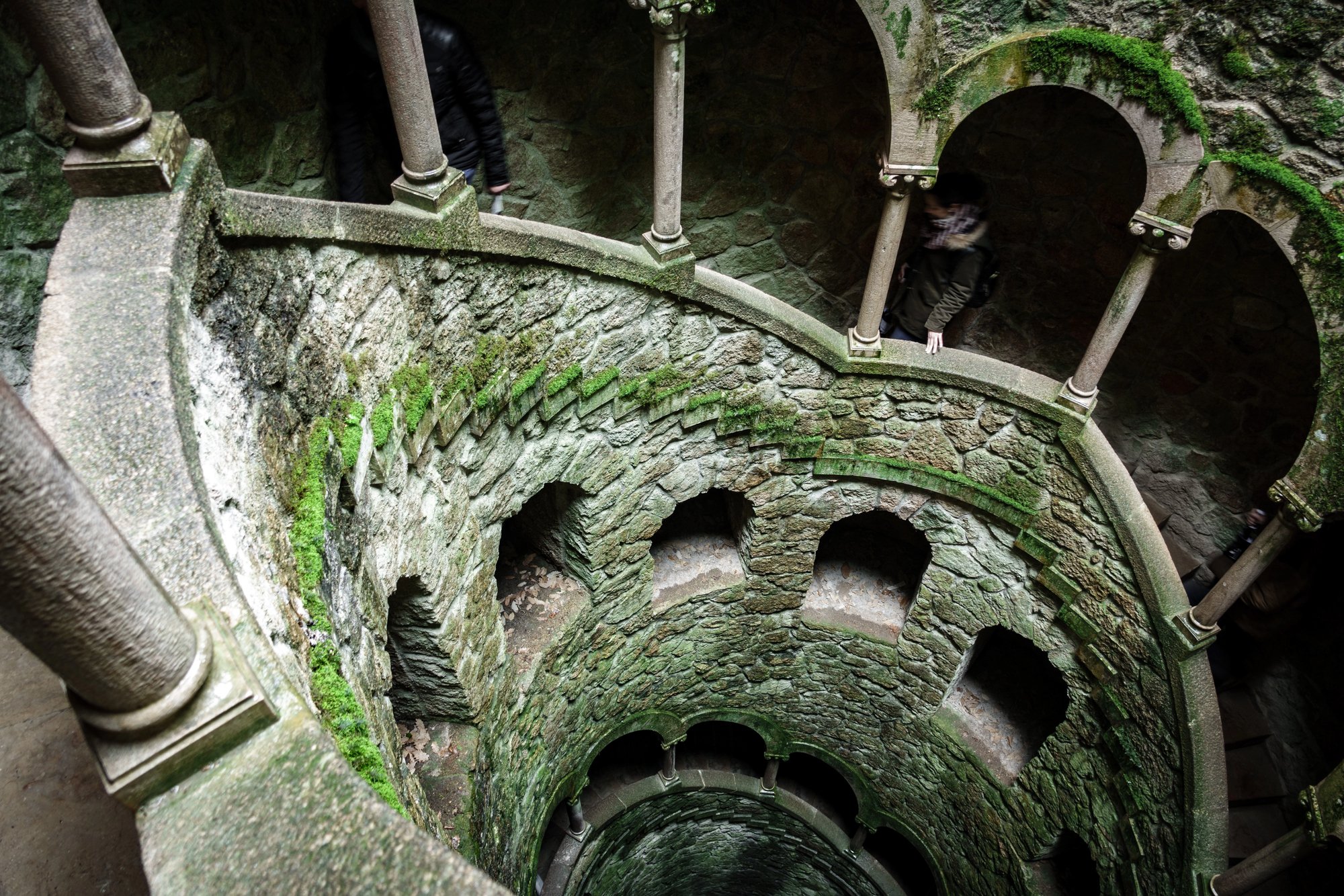
3. Casa do Penedo, Fafe
A house squeezed between and built into four huge boulders on a windswept ridge in northern Portugal. It looks like the Flintstones might open the front door at any moment.
Built in 1974 as a family retreat, the house was designed with simplicity in mind, but its unusual construction made it famous. The granite boulders form the walls, roof, and even part of the furniture inside. Over time it became so popular as a curiosity that the owners decided to convert it into a museum and make it available for rent.
Is it worth visiting? Yes, if you love odd architecture or scenic drives. The house itself is a quick stop, but the windswept plateau offers beautiful views. It makes a fun side trip on a northern Portugal itinerary.
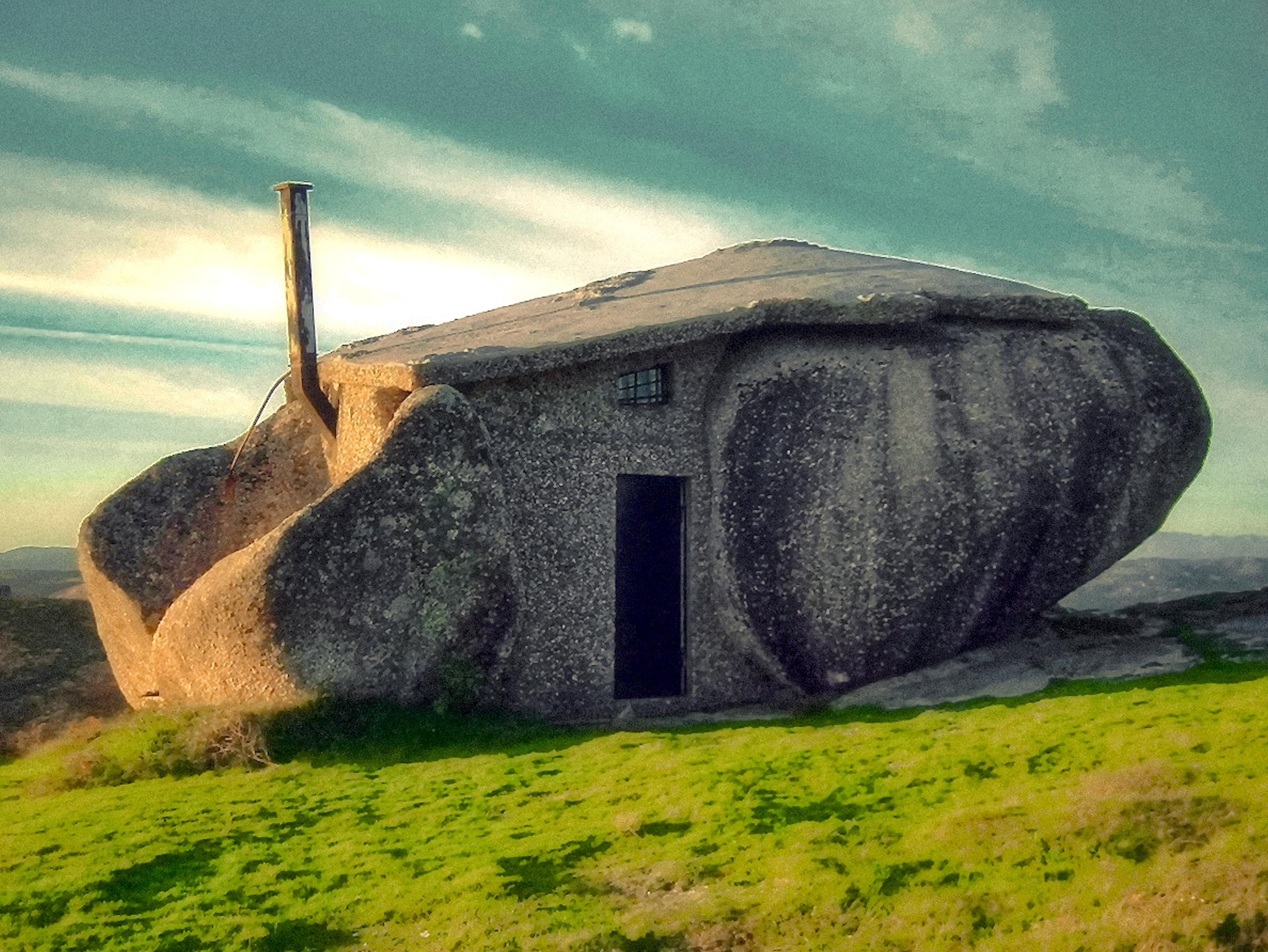
4. Umbrella Sky Project, Águeda
During summer months, several downtown streets in Águeda are covered by floating canopies of bright umbrellas. What began in 2011 as part of Águeda’s art festival quickly spread across social media. The umbrellas are practical as well as artistic. They shade the streets from the strong Portuguese sun, over time, different patterns and colors have been used, which create unique variations each year. It has become an international symbol of Portugal’s knack for creativity in public spaces. You can also see a smaller version of this in Cais do Sodré in Lisbon on Pink Street.
Is it worth visiting? Yes, if you are nearby in summer. It is easy to see and goes well with a coffee crawl. If you are traveling in winter, save it for another trip.
5. Bacalhôa Buddha Eden
A vast sculpture garden filled with giant Buddhas, terracotta-style figures, and contemporary art set across rolling vineyards.
The garden was created in response to the destruction of the Buddhas of Bamiyan in Afghanistan in 2001. The founder, art patron José Berardo, decided to build a sanctuary for art and peace in Portugal. Today the park covers more than 35 hectares, dotted with Asian statues, modern works, and water features. The contrasts between giant Buddhas, African sculptures, and vineyards can feel surreal but also inspiring.
Is it worth visiting? Yes, especially on a day trip from Lisbon or Óbidos. The garden’s size and variety make it worth far more than just a quick photo stop, and its unusual combination of themes makes it a standout.

6. 516 Arouca, Arouca Geopark
A 516-meter pedestrian suspension bridge strung high over the Paiva River in Arouca UNESCO Global Geopark.
It is one of the world’s longest pedestrian suspension bridges, and it wobbles just enough to remind you that you are dangling 175 meters above a roaring river. Just getting across gives you bragging rights.
Is it worth visiting? Yes, if you like a thrill and are not afraid of heights. The walk is spectacular and safe, and it turns a northern Portugal trip into an adventure. If heights are not your thing, you may find it more stressful than fun.
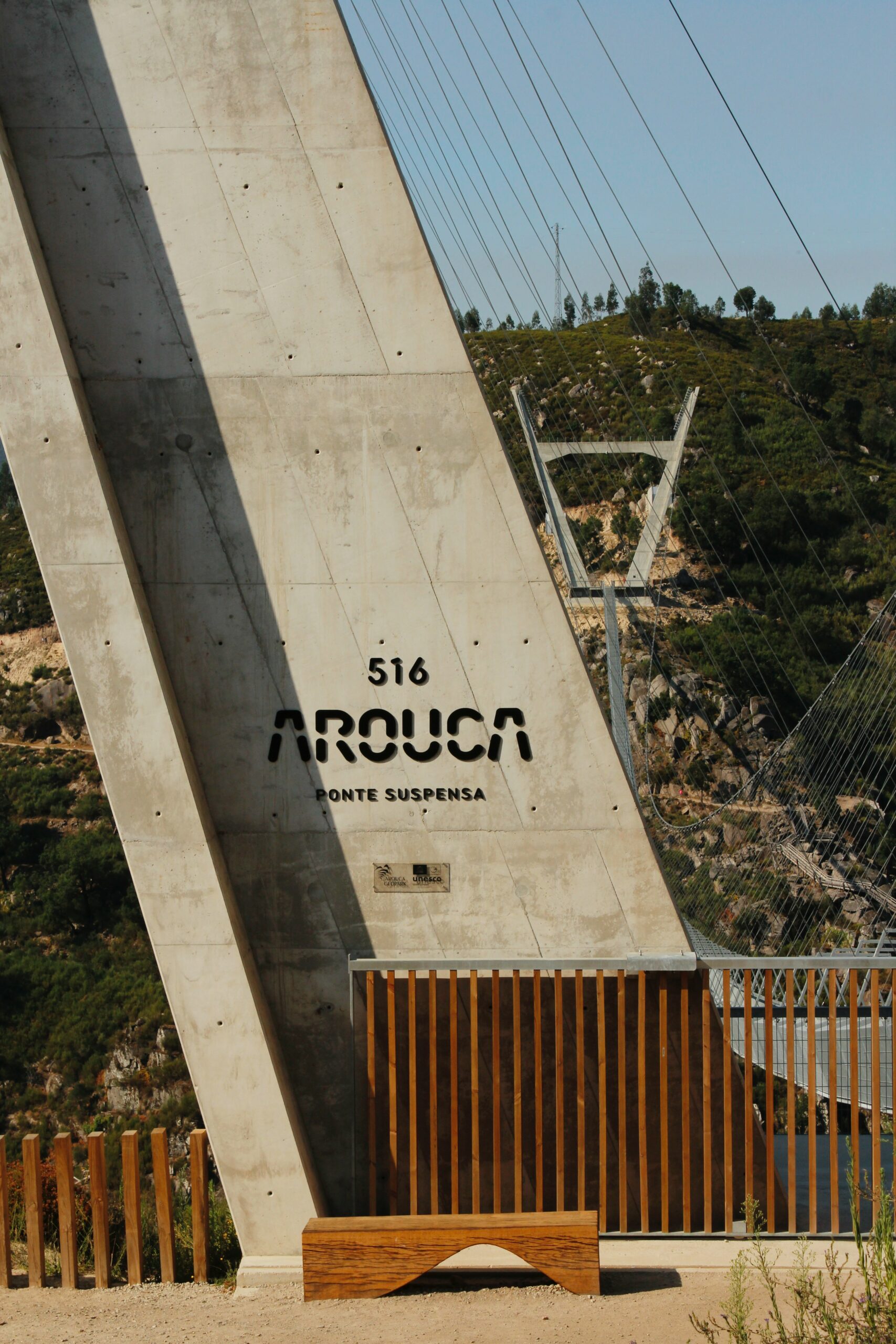
7. “Half Rabbit” by Bordalo II, Vila Nova de Gaia
A giant rabbit sculpture mounted on the corner of a building made from discarded materials and trash gathered around the city.
Portuguese street artist Bordalo II is known for making giant “trash animals” out of urban waste. It highlights environmental concerns about overconsumption and plastic. This piece in Gaia shows one side of the rabbit painted realistically, while the other reveals the jumble of tires, wires, and plastics that compose it. It is both playful and political.
Is it worth visiting? Yes, as a quick stop. It will take ten minutes, it is an easy add-on to a riverfront stroll, and you will leave with a great photo and a reminder that art can be made from what we throw away.

8. Quake, Lisbon Earthquake Experience, Lisbon
An immersive museum where you learn about the 1755 Lisbon earthquake through multimedia exhibits and a motion simulator that recreates a quake.
Lisbon’s devastating earthquake of 1755 shaped the city and Europe’s history. It inspired new ideas in philosophy, science, and urban planning. Quake lets you experience the drama through interactive exhibits, holograms, and reconstructed streets of 1755 Lisbon that suddenly shake as the “quake” begins. It honestly feels part museum and part theme park.
Is it worth visiting? Yes, especially for families and the curious. It is educational, emotional, surprisingly fun, and a powerful lens for understanding why Lisbon looks the way it does today.
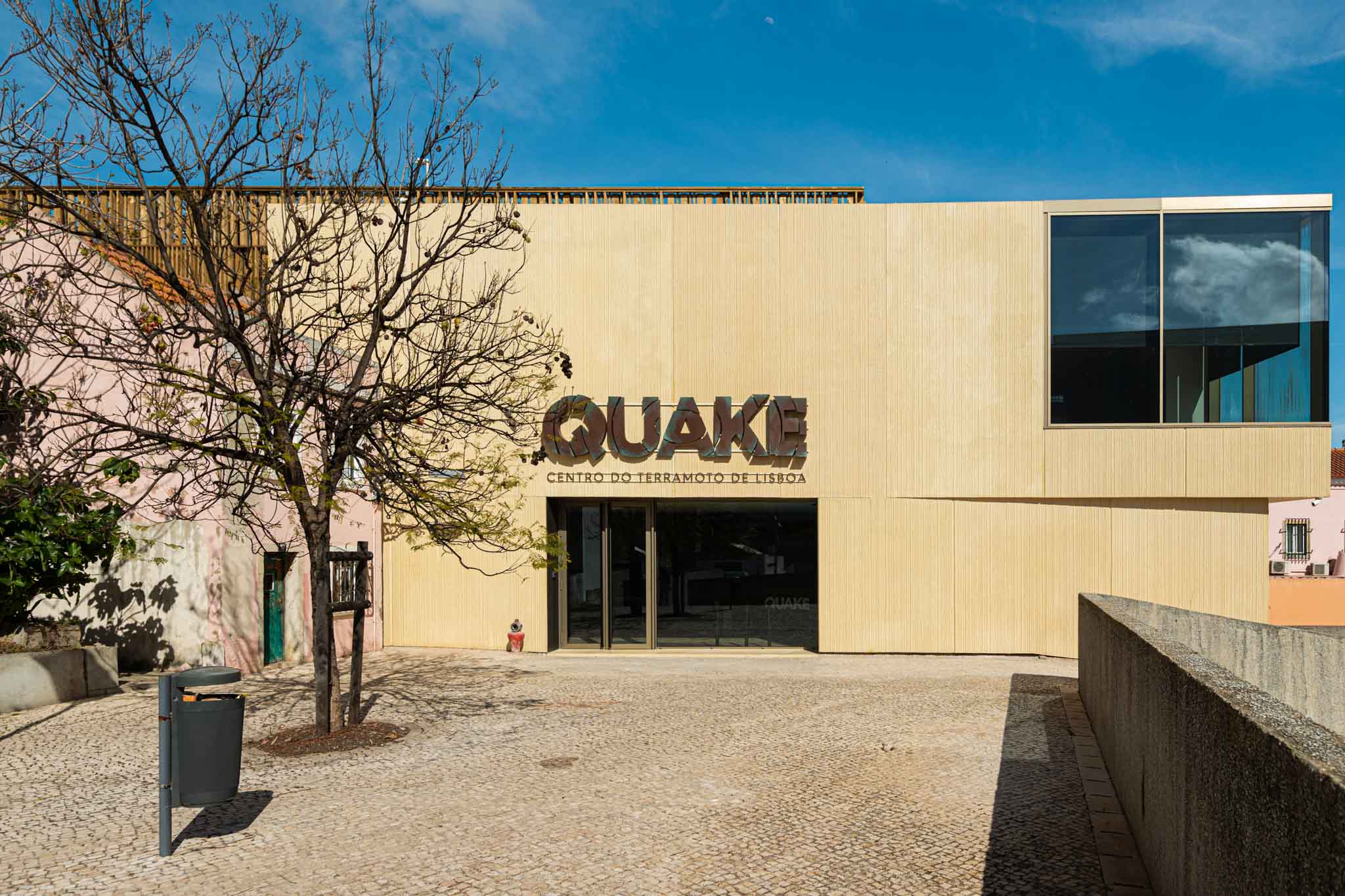
9. Ponte Internacional do Marco, Arronches–La Codosera
A tiny wooden bridge that crosses a small stream along the Portugal–Spain border. It is considered the smallest international bridge in the world.
It is only about six meters long and just wide enough for pedestrians or a bicycle. Stepping across it means you have moved from one country to another in a couple of strides. There are few places where international travel feels this quaint, and the rural setting adds to the charm.
Is it worth visiting? Maybe, if you are already in the area. As a destination on its own, it is tiny and takes minutes, but if you are exploring the interior of the Alentejo or crossing over to Extremadura, it is a fun, oddball add-on.
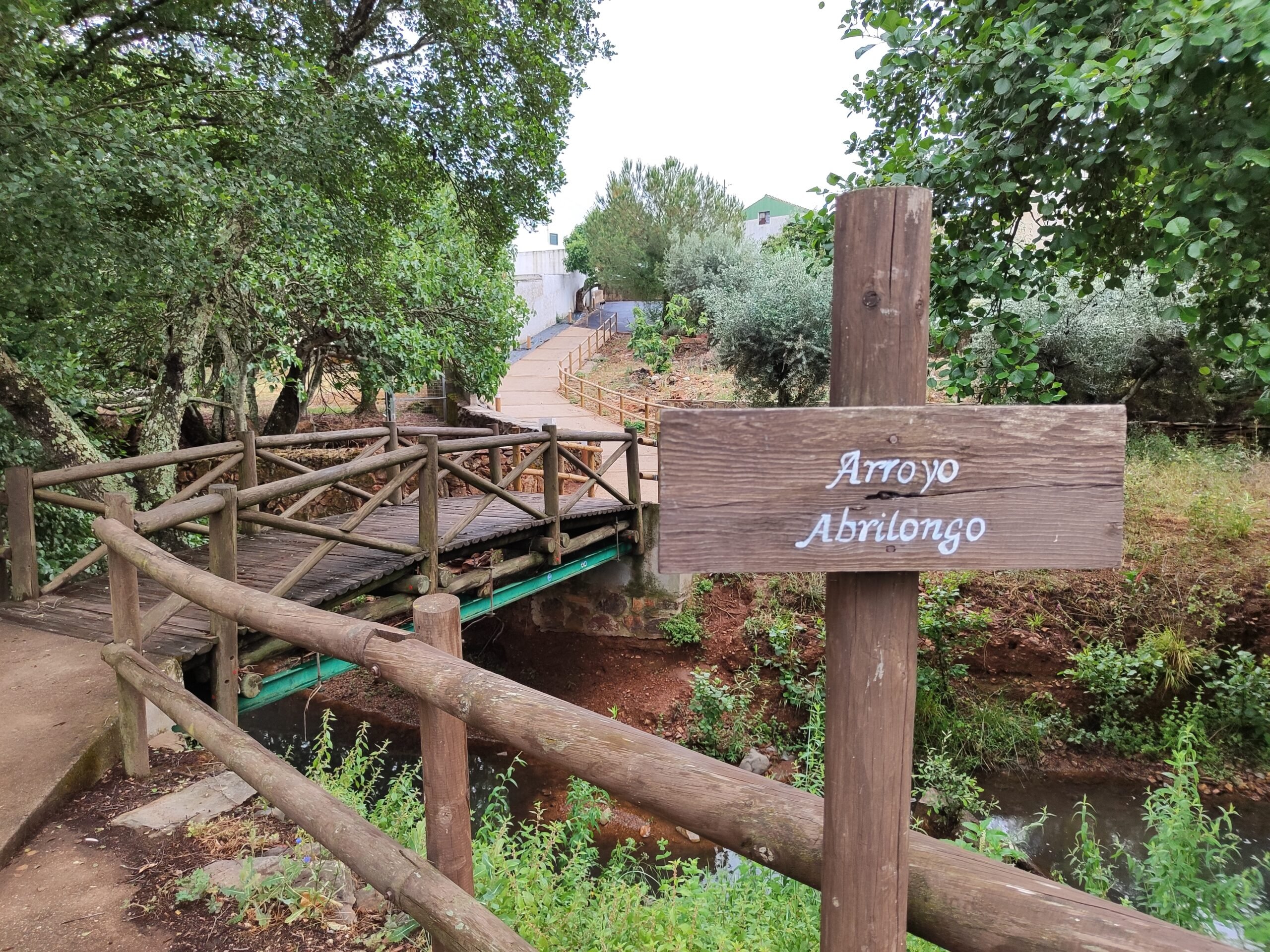
10. The Bats of Biblioteca Joanina, Coimbra
An 18th-century university library where small bat colonies roost behind the shelves. At night they fly out, eating insects that would otherwise damage the rare books.
The library itself is an ornate baroque jewel, filled with gilded woodwork, frescoes, and rare manuscripts. However, the bats are the twist. They have been allowed to live here for centuries because they protect the books from moths and insects. Each evening, the staff cover the tables with leather cloths, and each morning they clean up the mess. You are very unlikely to ever see a bat inside the library, since it closes by 6pm, but they are still very much on the scene.
Is it worth visiting? Absolutely. Even if you never see a bat, the library itself is jaw-dropping, and the story of its nocturnal guardians is the kind of detail you will remember.
11. Matchbook Museum, Tomar
A one-of-a-kind museum (also known as Museu dos Fósforos) dedicated entirely to matchboxes and matchbooks with thousands of pieces from all over the world.
It sounds improbable, but the collection is mesmerizing. From vintage advertising designs to collections from countries that no longer exist, the matchbooks capture eras of graphic design, branding, and everyday culture in miniature form. Some feature political propaganda, others celebrate events, while many simply advertise local businesses. It is a collector’s dream and a reminder of how even disposable objects can tell global stories.
Is it worth visiting? Yes, if you are in Tomar. It is small, but the sheer variety is fun to explore, and it offers a strange yet delightful counterpoint to the city’s grander monuments like the Convent of Christ.

12. Museum of Mechanical Music, Pinhal Novo
A museum filled with historic self-playing instruments from barrel organs and music boxes to pianolas and gramophones.
The collection transforms the dry idea of “old machines” into something charming and theatrical. Many pieces still function and fill the space with music that once entertained people before radios and recordings. The guided tours are the highlight, as staff demonstrate the instruments and explain their history.
Is it worth visiting? Yes, especially for families or music lovers. It is interactive, unusual, and surprisingly moving to hear melodies crank out of century-old devices. It also makes an excellent half-day trip from Lisbon.
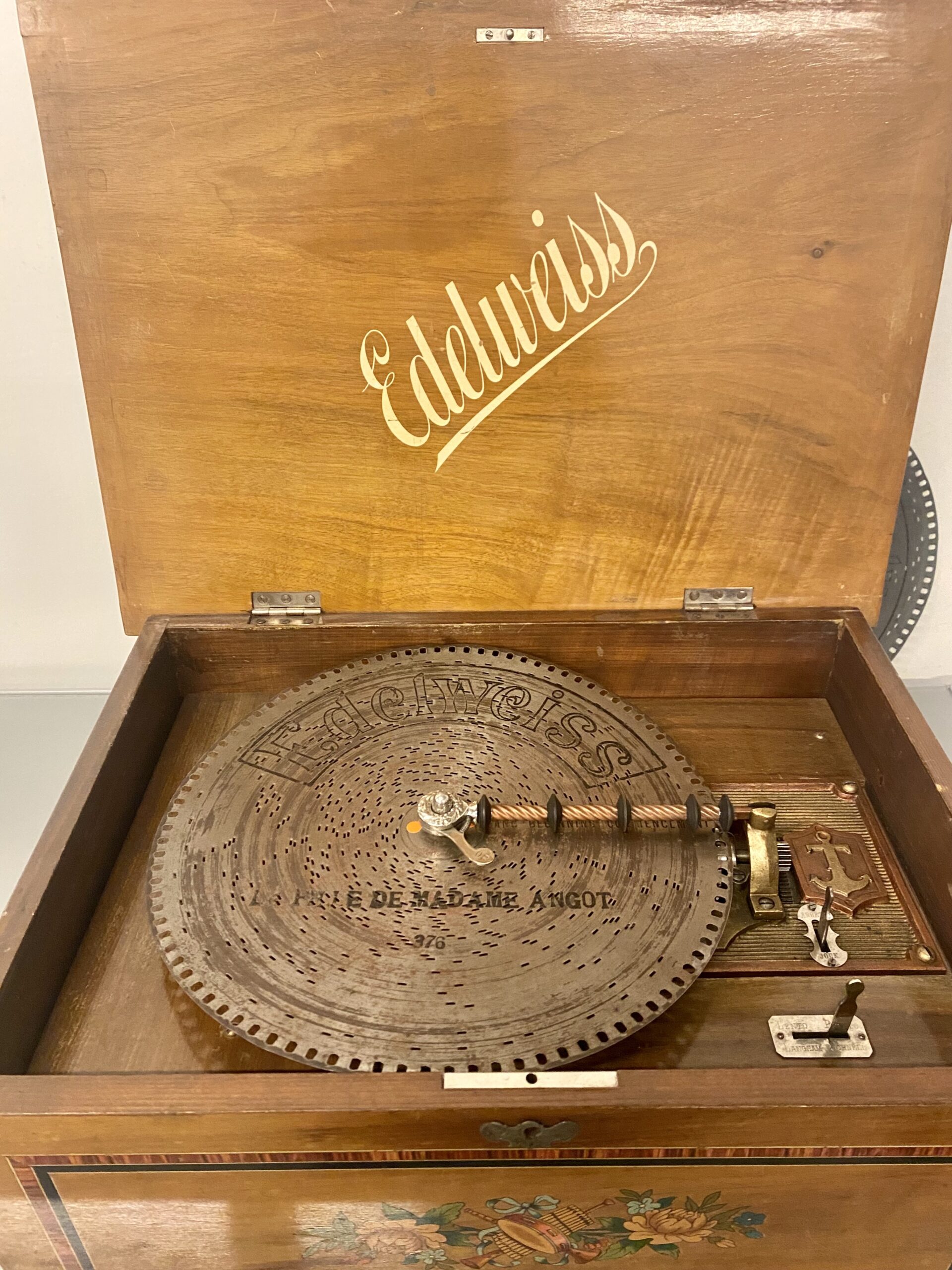
Final Thoughts
Portugal’s quirks are a window into its creativity and multi-layered past. Some of these places deliver adrenaline, and some are just plain fun. Build your itinerary around a few that fit your route and season, lean into the oddness, and let yourself be surprised. Chances are you will come away with a story that no one else on your trip can tell.

